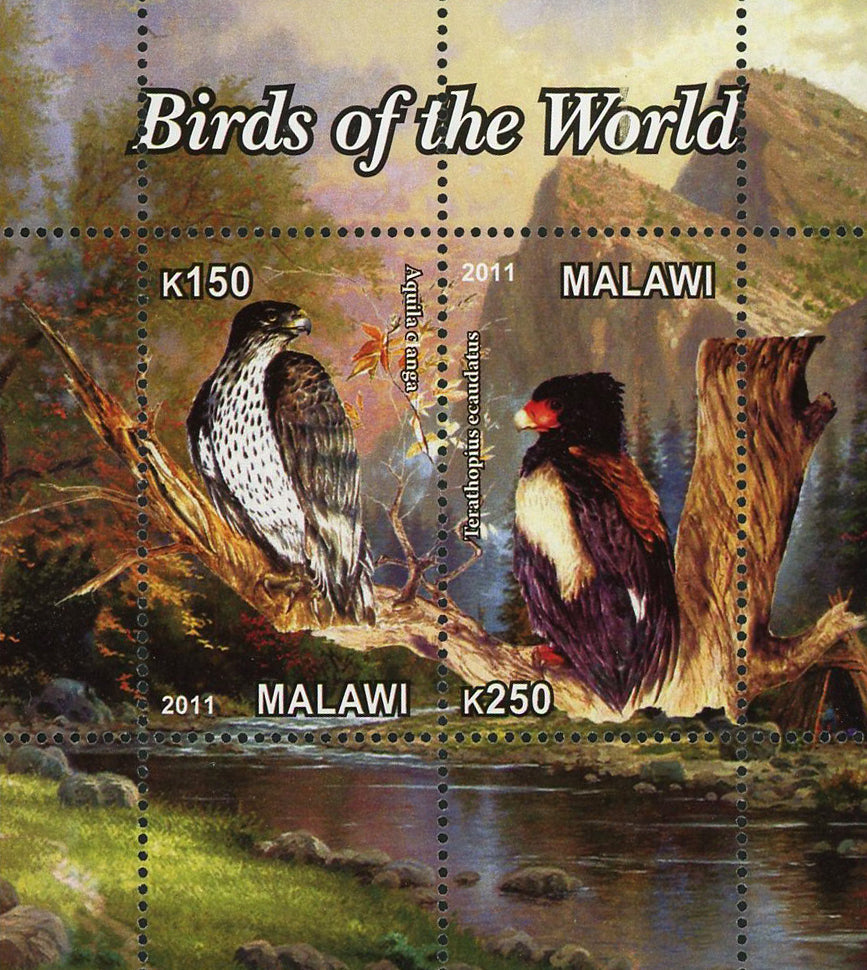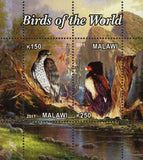Malawi Birds Of The World Aguila Nature Lake Souvenir Sheet of 2 Stamps Mint NH
Malawi Birds Of The World Nature Lake Souvenir Sheet of 2 Stamps Mint NH
Birds, also known as Aves, are a group of endothermic vertebrates, characterised by feathers, toothless beaked jaws, the laying of hard-shelled eggs, a high metabolic rate, a four-chambered heart, and a strong yet lightweight skeleton. Birds live worldwide and range in size from the 5 cm (2 in) bee hummingbird to the 2.75 m (9 ft) ostrich. They rank as the world's most numerically-successful class of tetrapods, with approximately ten thousand living species, more than half of these being passerines, sometimes known as perching birds. Birds have wings which are more or less developed depending on the species; the only known groups without wings are the extinct moa and elephant birds. Wings, which evolved from forelimbs, gave birds the ability to fly, although further evolution has led to the loss of flight in flightless birds, including ratites, penguins, and diverse endemic island species of birds. The digestive and respiratory systems of birds are also uniquely adapted for flight. Some bird species of aquatic environments, particularly seabirds and some waterbirds, have further evolved for swimming.
The fossil record demonstrates that birds are modern feathered dinosaurs, having evolved from earlier feathered dinosaurs within the theropod group, which are traditionally placed within the saurischian dinosaurs. The closest living relatives of birds are the crocodilians. Primitive bird-like dinosaurs that lie outside class Aves proper, in the broader group Avialae, have been found dating back to the mid-Jurassic period, around 170 million years ago. Many of these early "stem-birds", such as Archaeopteryx, were not yet capable of fully powered flight, and many retained primitive characteristics like toothy jaws in place of beaks, and long bony tails. DNA-based evidence finds that birds diversified dramatically around the time of the Cretaceous–Palaeogene extinction event 66 million years ago, which killed off the pterosaurs and all the non-avian dinosaur lineages. But birds, especially those in the southern continents, survived this event and then migrated to other parts of the world while diversifying during periods of global cooling. This makes them the sole surviving dinosaurs according to cladistics.
Fast & Free Shipping within U.S.A.
We Care for your order, Pack it carefully and ship it within 24 hours.
Satisfaction Guaranteed!
Please explore our store for more stamps, souvenir sheets, post-office collectibles and philately books and pre-philatelic items:
montecinos.philately




















